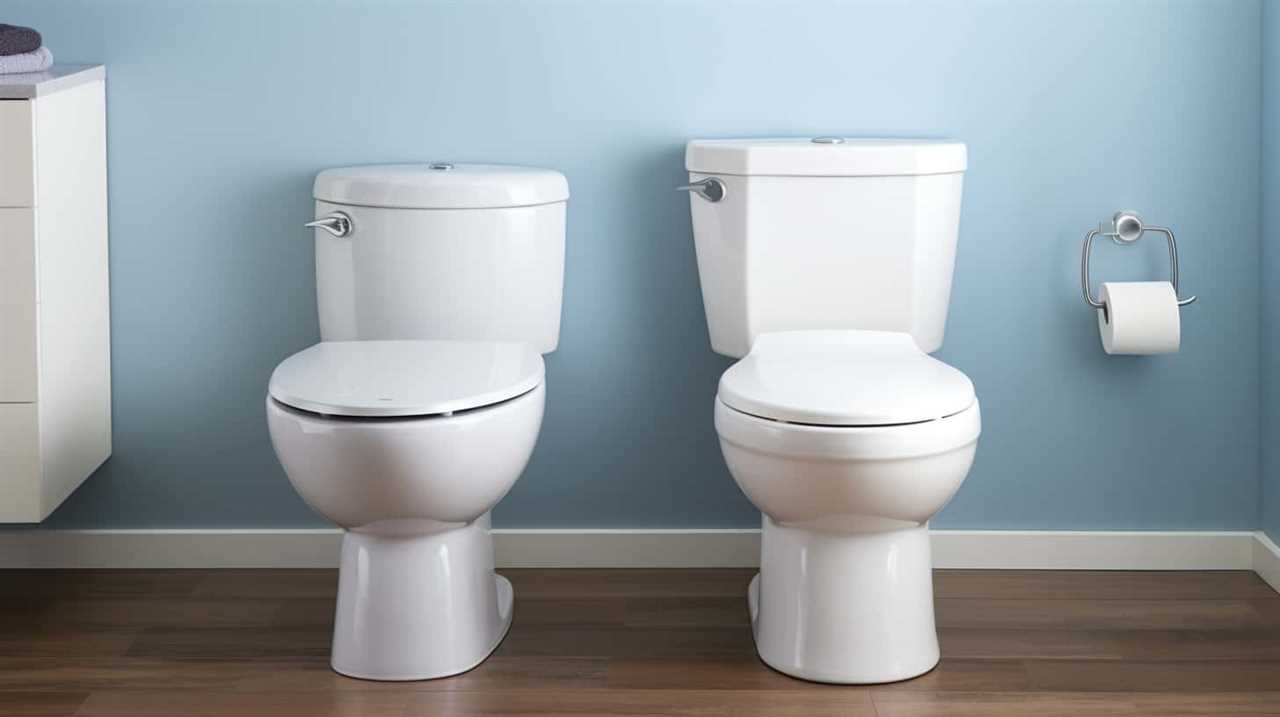Have you ever wondered where the waste goes when you flush the toilet?
Well, let us take you on a journey from your bathroom to the depths of the sewer system. We’ll explore how your waste travels through underground pipes, undergoes treatment at specialized facilities, and ultimately ends up either disposed of or reused.
Join us as we delve into the importance of proper waste management and its impact on the environment. Get ready to master the intricacies of toilet waste disposal.
Key Takeaways
- Waste from the toilet travels through a series of pipes to reach the sewer system, with underground pipes ensuring safe and efficient transport.
- Treatment facilities in the sewer system play a crucial role in cleaning and filtering waste through processes like sedimentation, biological treatment, and filtration.
- Treated waste can be disposed of in secure landfill facilities, burned in specialized incinerators, used as fertilizer in agriculture, or further purified for non-potable purposes.
- Proper waste management is crucial for the sustainable preservation of the environment, reducing pollution, protecting ecosystems, and preventing water contamination and health risks.
The Journey Begins: From Your Toilet to the Sewer System
When we flush the toilet, the waste travels through a series of pipes and ultimately ends up in the sewer system. This essential part of the waste management process relies on a vast underground infrastructure.

The journey begins as the waste is carried away from our homes through a network of underground pipes. These pipes, carefully designed and constructed, ensure the safe and efficient transport of the waste to the sewer system. The underground infrastructure includes a complex system of gravity-driven pipes and pump stations that facilitate the movement of the waste.
This waste management process is crucial for maintaining public health and sanitation. As the waste continues its journey through the sewer system, it undergoes further treatment and processing.
Now, let’s delve into the next section to explore the intricate process of underground transport: navigating the sewer pipes.
Underground Transport: Navigating the Sewer Pipes
Continuing our journey from the previous subtopic, we navigate the sewer pipes to understand the underground transport of waste. Sewer maintenance and pipe infrastructure play vital roles in ensuring the efficient flow of waste from our homes to the treatment plants. Let’s take a closer look at the components involved in this process.
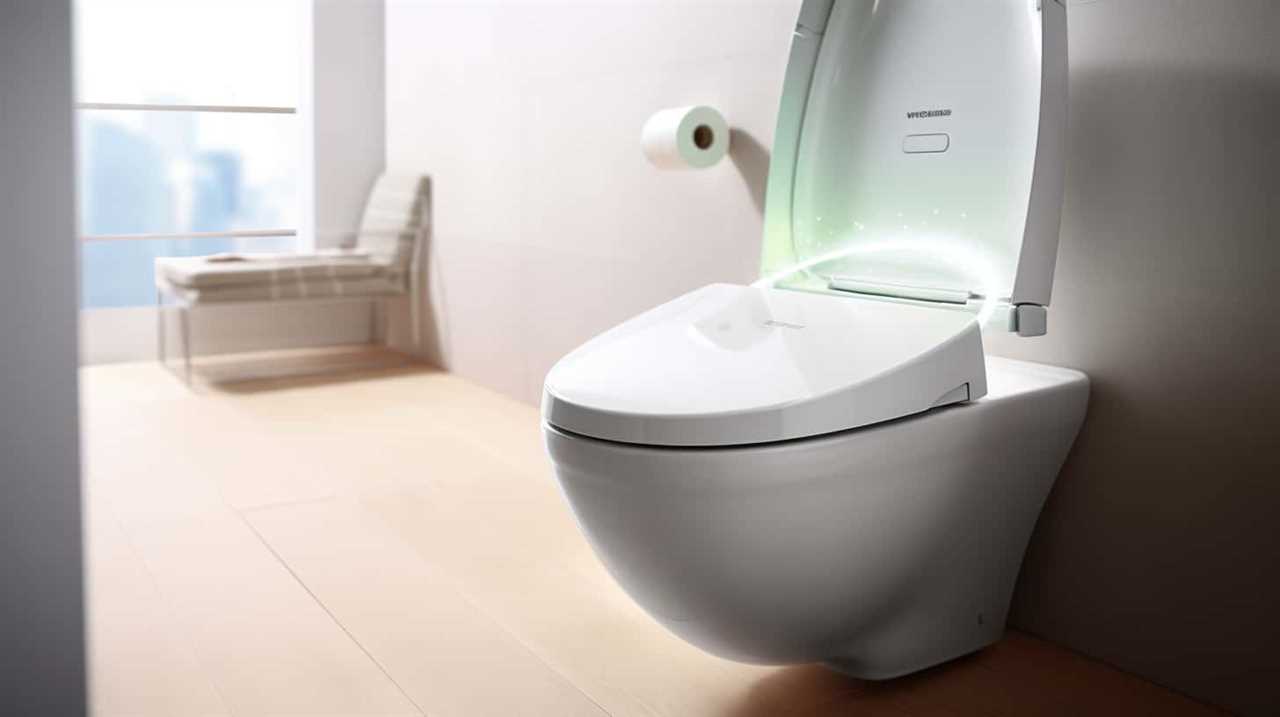
| Component | Description |
|---|---|
| Main Sewer Line | Large underground pipes that collect waste from smaller pipes and transport it to the treatment plant. |
| Lateral Pipes | Smaller pipes that connect individual buildings to the main sewer line. |
| Manholes | Access points for maintenance personnel to enter the sewer system and inspect or repair the pipes. |
| Pumping Stations | Facilities equipped with pumps that help to propel waste uphill or overcome gravity’s resistance. |
Understanding the layout and function of these components is crucial for effective sewer maintenance and the longevity of the pipe infrastructure. By keeping these systems in good condition, we can ensure the smooth and reliable transport of waste, protecting public health and the environment.
Treatment Facilities: Where Waste Gets Cleaned and Filtered
After navigating the sewer pipes, we arrive at the treatment facilities where waste is cleaned and filtered. These facilities play a crucial role in the waste treatment process and ensure that the water we use is purified before being released back into the environment.
The waste treatment process involves several steps to remove impurities and harmful substances. First, the solid waste is separated from the liquid waste through a process called sedimentation.
Then, the liquid waste undergoes biological treatment, where microorganisms break down organic matter. After that, the water goes through a series of filtration processes to remove any remaining solids.
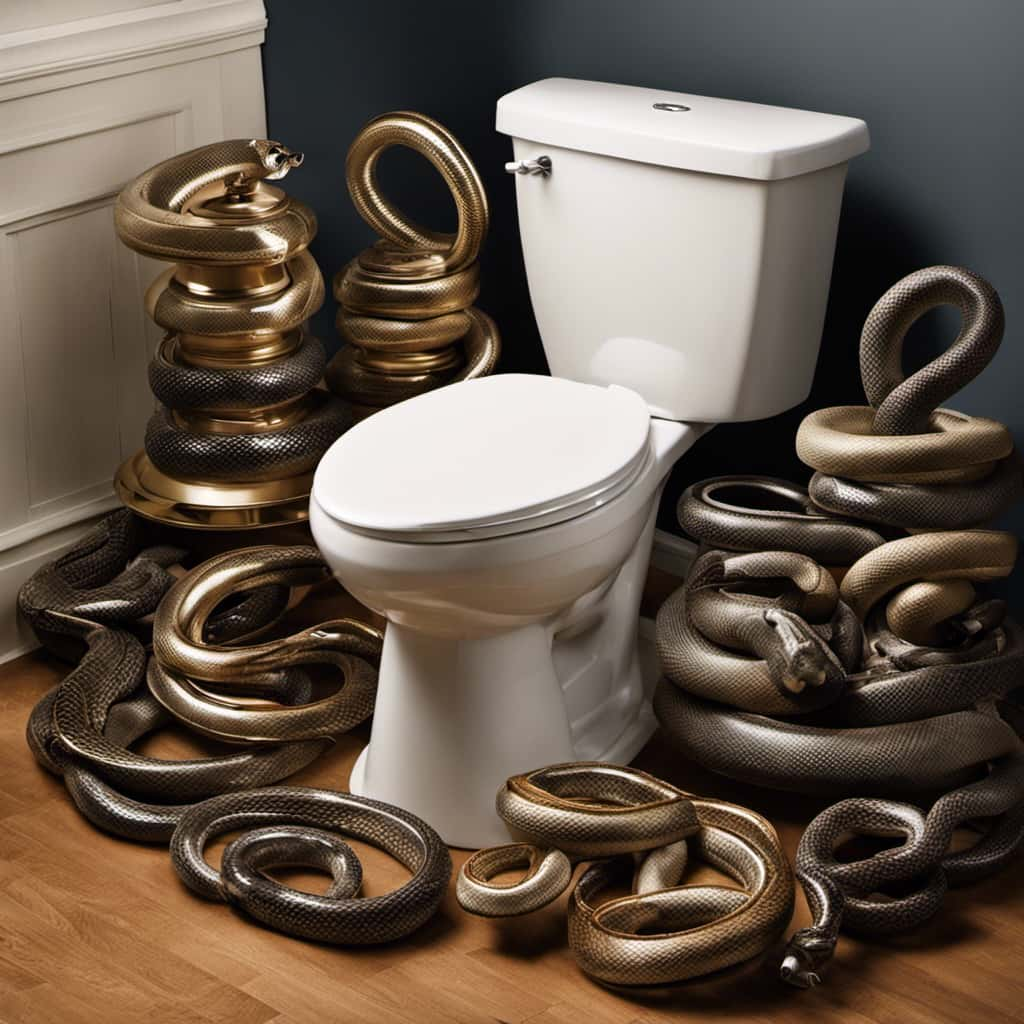
The Final Destination: Disposal or Reuse of Treated Waste
Once the waste has been treated and purified, we must decide on the final destination for its disposal or reuse. Here are some disposal methods and recycling options for treated waste:
- Landfill: Treated waste can be disposed of in a secure landfill facility designed to prevent any contamination of the surrounding environment.
- Incineration: Waste can be burned at high temperatures in specialized incinerators, reducing its volume and producing energy in the process.
- Land application: Treated waste can be used as fertilizer in agriculture, providing valuable nutrients to crops while minimizing the need for synthetic fertilizers.
- Water reuse: Some treated waste can be further purified and reused for non-potable purposes such as irrigation or industrial processes, conserving freshwater resources.
Choosing the appropriate disposal method or recycling option depends on factors such as the quality of the treated waste, local regulations, and the specific needs of the community. It’s crucial to consider these options carefully to ensure the safe and sustainable management of treated waste.
Environmental Impact: Understanding the Importance of Proper Waste Management
Proper waste management is crucial for the sustainable preservation of our environment. It involves the efficient handling, disposal, and recycling of waste to minimize its negative impact on our surroundings.
One of the key components of proper waste management is the importance of recycling. Recycling helps to conserve natural resources, reduce energy consumption, and decrease pollution. By reusing materials such as paper, plastic, and glass, we can significantly reduce the amount of waste that ends up in landfills or incinerators.
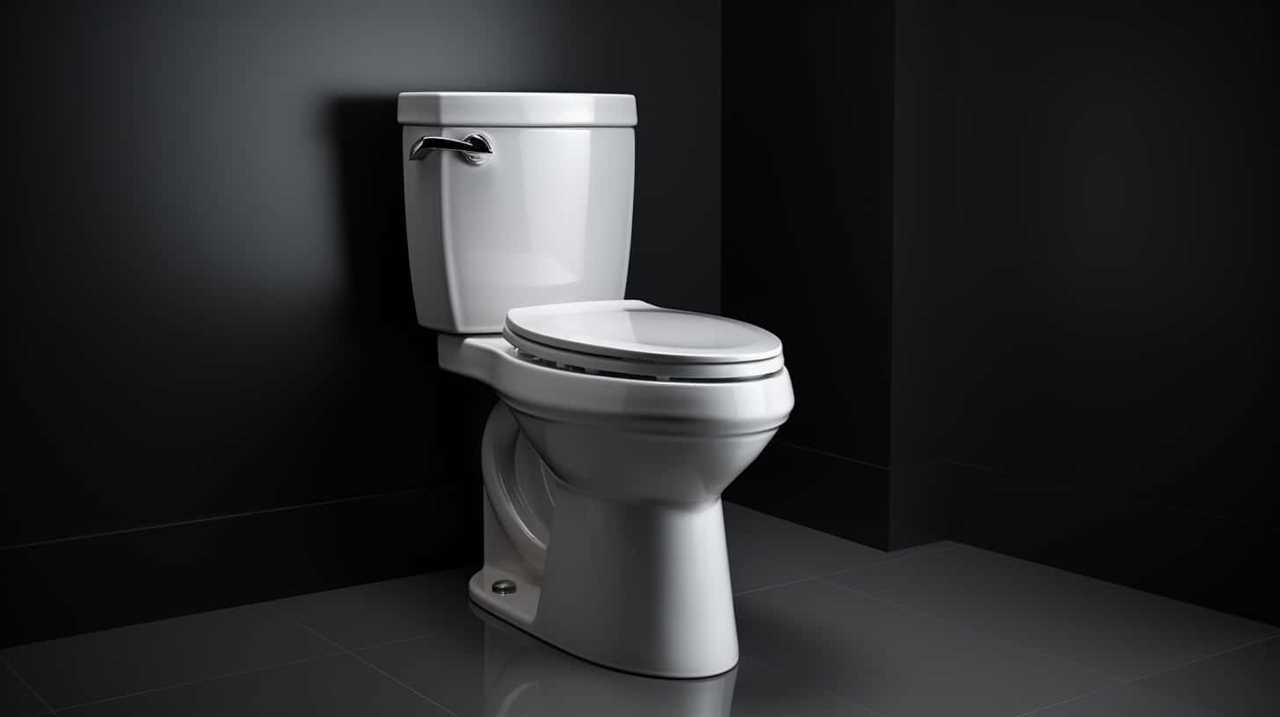
On the other hand, improper waste disposal can have severe environmental effects. It can contaminate water sources, release harmful chemicals into the air, and contribute to the depletion of natural resources.
Therefore, it’s vital to educate ourselves and others about the significance of proper waste management to ensure a cleaner and healthier environment for future generations.
Frequently Asked Questions
How Does a Septic Tank System Work?
When we flush the toilet, waste goes into a septic tank system. The system works by allowing solids to settle at the bottom while bacteria breaks down the waste. Regular septic tank maintenance and avoiding septic tank additives are essential for proper functioning.
What Happens to the Waste After It Is Treated in the Treatment Facility?
After treatment, the waste is transformed into reclaimed water. This water undergoes rigorous purification processes to remove harmful contaminants. The environmental impact is minimized through strict regulations and monitoring, ensuring the safe disposal and reuse of the treated wastewater.

How Often Should Septic Tanks Be Pumped?
When it comes to septic tank maintenance, it is important to know how often they should be pumped. Signs of a full septic tank are slow drains, foul odors, and sewage backups.
Can Toilet Paper Clog the Sewer Pipes?
When we flush the toilet, the waste goes through the sewer pipes. However, we should be mindful of using too much toilet paper, as it can potentially clog the pipes and require septic tank maintenance. There are alternatives to toilet paper available as well.
Are There Any Health Risks Associated With Improper Waste Management?
Improper waste management can pose health hazards and have a significant environmental impact. It is crucial to handle waste responsibly to prevent the spread of diseases and minimize pollution in our surroundings.
Conclusion
So, there you have it. When you flush the toilet, the waste goes on a journey through the sewer system, where it’s transported through underground pipes.
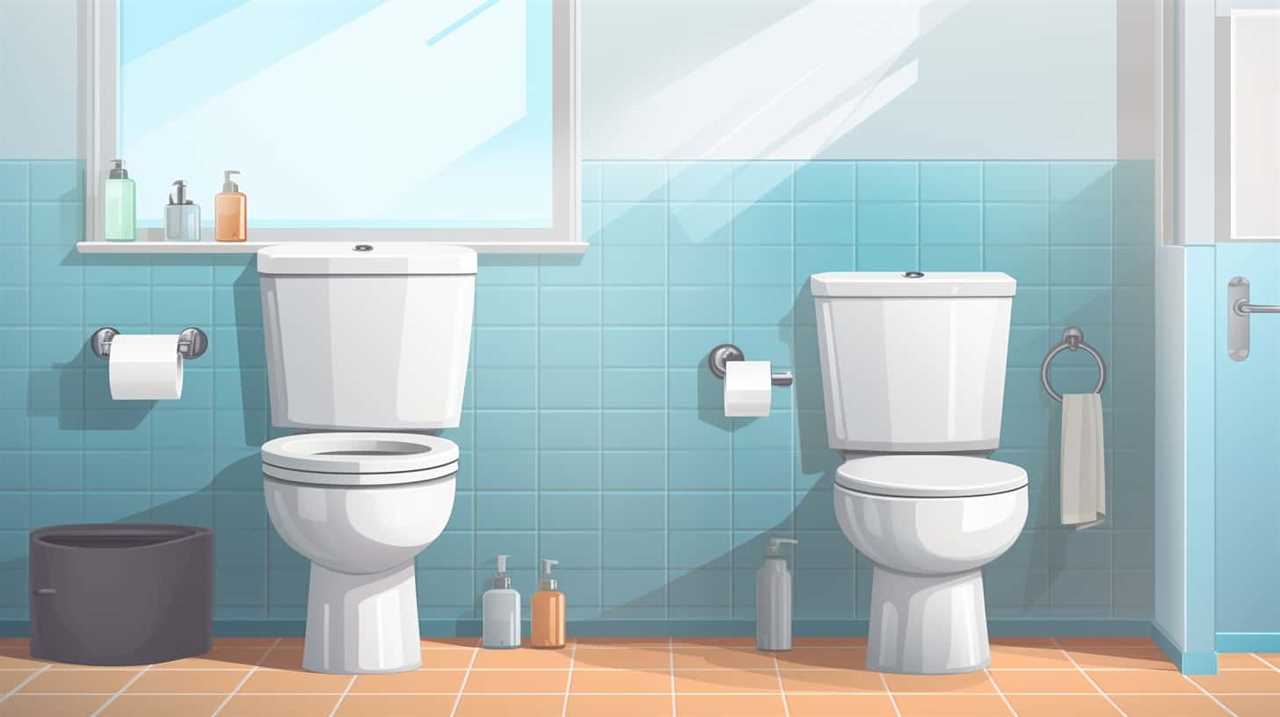
At treatment facilities, the waste is cleaned and filtered before being disposed of or reused. Proper waste management is crucial for protecting the environment.
Now, some might say that thinking about where our waste goes is unpleasant, but understanding the process can help us appreciate the importance of responsible waste disposal.





